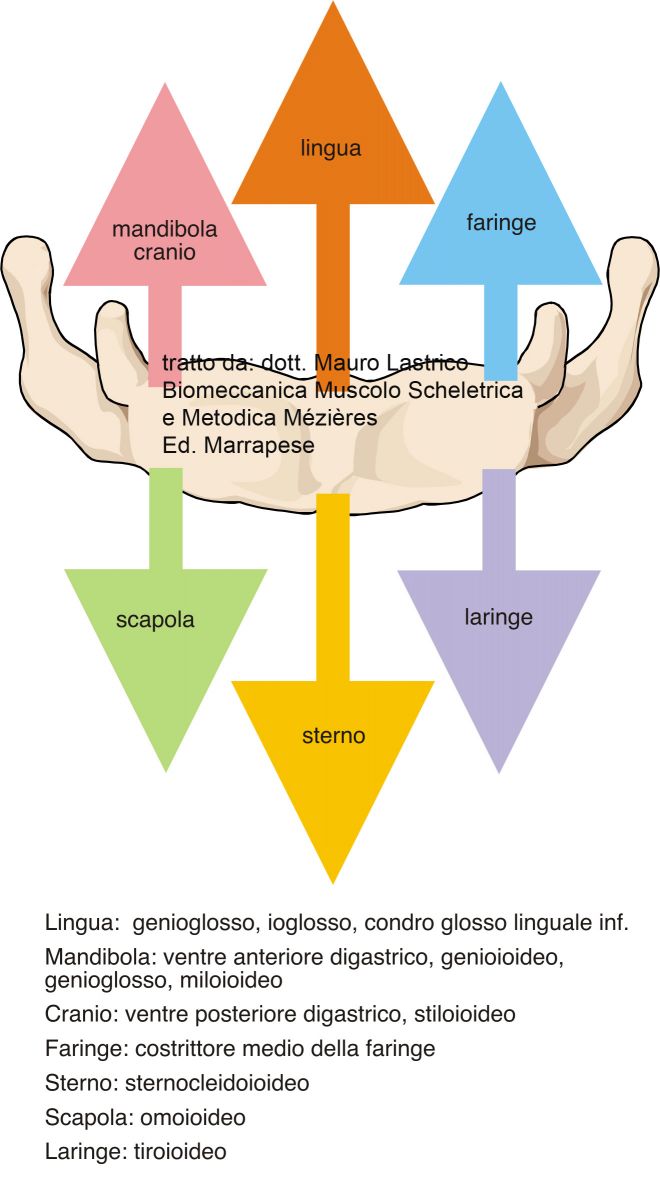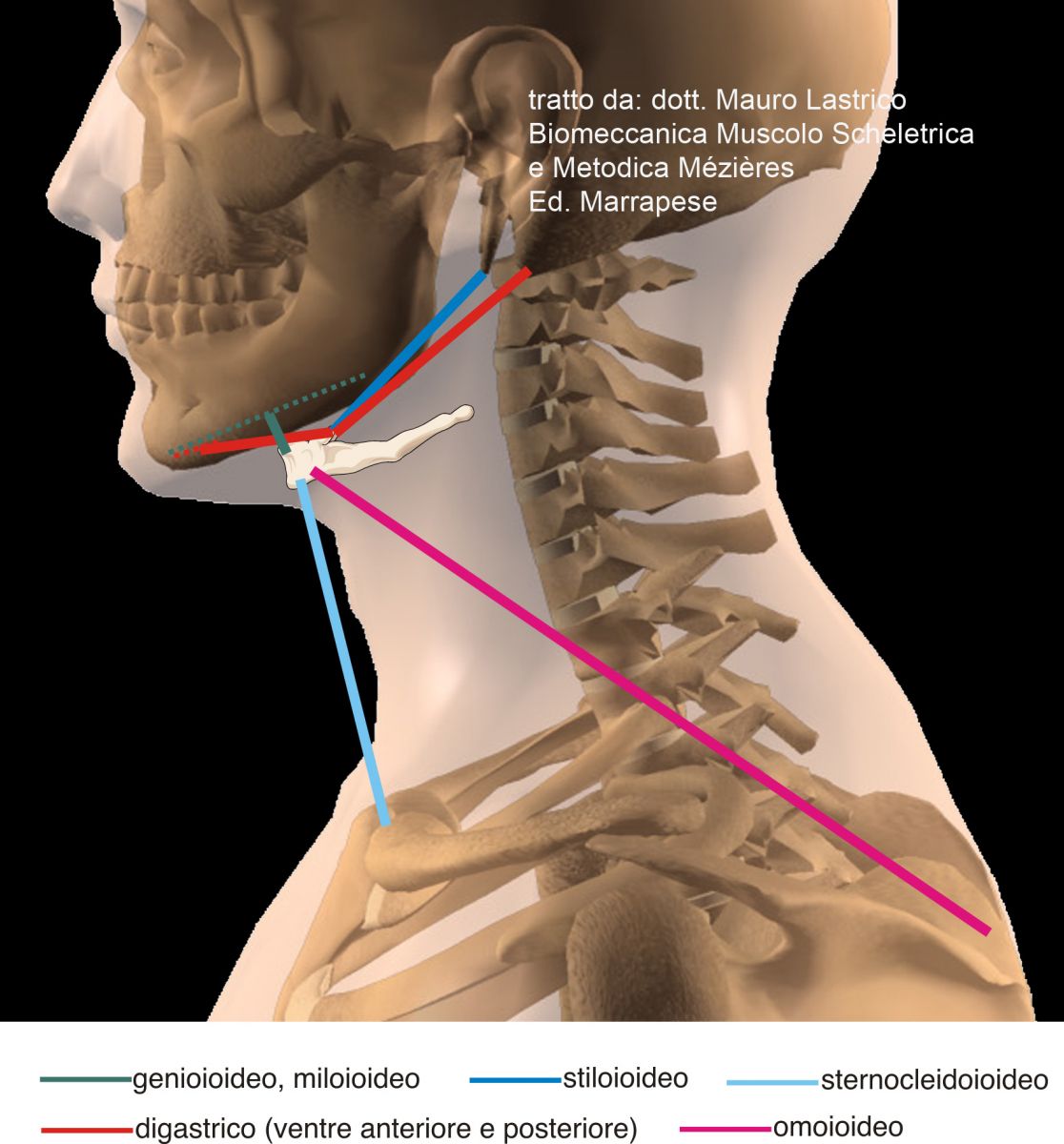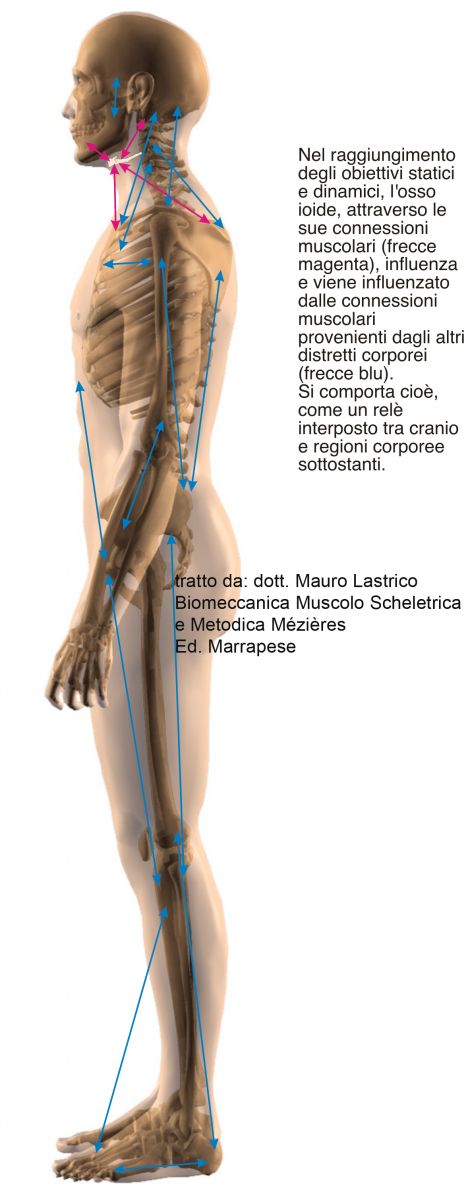Biomechanics of the Hyoid Bone
Dr. Mauro Lastrico
Hyoid Bone
Dr. Mauro Lastrico, physiotherapist
Excerpt from:
"Musculoskeletal biomechanics and Mézières method"
Author: Dr. Mauro Lastrico
Marrapese Publisher
The hyoid bone, through its musculo-fascial connections with the skull, mandible, sternum, scapula, larynx, and pharynx, constitutes the support point for jaw opening movements, participates in swallowing, phonation, and respiration, and is involved in the positioning of the skull and scapula.

It functions like a relay between the skull and the underlying regions.
A relay is a circuit that uses its own variations to influence the conditions of other circuits and is in turn influenced by those other circuits.

The hyoid bone, through its direct connections with the skull, mandible, sternum, and scapula, and indirectly through muscles that go cranially from the scapula and sternum toward the cervical vertebrae and skull and caudally from the scapula toward the thoraco-lumbar vertebrae and pelvis, can influence and be influenced by all body regions.
The hyoid muscles thus participate in the strategies that the system puts into action in pursuing its objectives, both in static and dynamic conditions.

If the hyoid muscles enter excessive tension and subsequent shortening, in addition to causing local and systemic skeletal misalignments, swallowing and phonation disorders may occur.
In physiological swallowing, the hyoid muscles work synergistically with the jaw closers. Occlusal problems or cranio-cervical musculoskeletal imbalances can interfere with the proper balance between the two muscle groups, causing atypical swallowing phenomena. In this case, swallowing will occur without tooth locking.
In phonation, frequency variations (high and low sounds) are determined by the movements of the larynx: to produce a high-pitched sound, the larynx rises cranially; to produce a low-pitched sound, it lowers caudally.
This action involves the hyoid bone through the effect of the hyoid muscles.
Signs of retraction of the hyoid muscles can be an excessively high-pitched voice (as sound, not volume), tending towards falsetto, possibly associated with a reduction in frequency modulation (monotonous voice).
Copyright © 2025 AIFiMM Formazione Mézières Provider E.C.M. n. 1701. All rights reserved.



